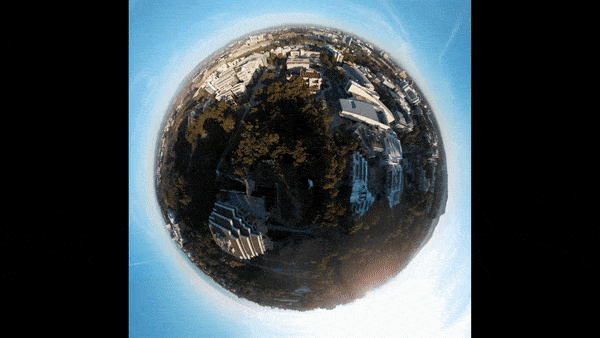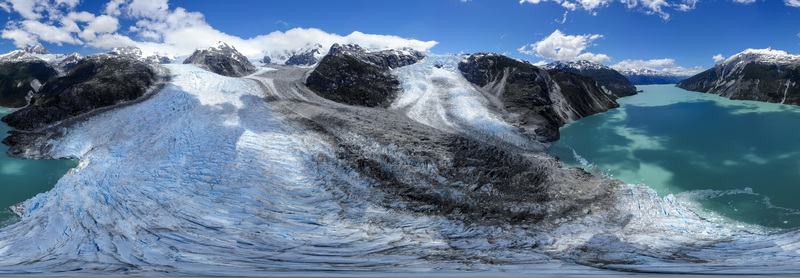DJI had been teasing the release of a new drone and today it became official: the DJI Mavic Air.
The pint-sized drone comes packed with some great features and an attractive price point. From the DJI press release:
- Weight: 430 grams (less than a pound)
- 12MP camera (using a
- 3-axis stabilization via onboard gimbal
- 21 minutes flight time
- 4km flight range
- 3-way obstacle avoidance
- 32MP panorama mode
- 4K video at up to 100Mbps bit rate
- Slow-motion 120fps at 1080p
All of this is available for the relatively low price of $799 USD.
The Size
First off let’s talk about the size. This thing is tiny.
The propeller arms fold in tightly and make it only slightly bigger than a phone or mini tablet. This thing is even more portable than the already-small Mavic Pro.
The Pictures
DJI is putting their reliable 12 megapixel sensor into the Mavic Air. The image quality is very good from a smaller sensor and although I always prefer more megapixels (one of the reasons I stick with my Phantom 4 Pro) 12 megapixels gives you nice detail and image quality for all but the biggest of prints.
DJI is really pushing their new panorama modes. I’ve used the panorama mode on my Phantom 4 Pro and loved it, you simply tell it where to start and it will take care of everything else, shooting either horizontal, vertical, or 180 degree images. The Mavic Air will be able to shoot 32-megapixel images in Sphere Panorama mode automagically for you, a combination of 25 images that it shoots in less than a minute.
DJI provided the following sample of a sphere panorama.
The Video
The video specs are the real story of the Mavic Air, in my opinion. 4K video is a given with the Mavic name, but 30fps at 100Mbps bit rate is even better than the Mavic Pro! I think a lot of people were expecting 60 frames per second but it is understandable why it wasn’t in this cheaper drone (I expect it will be in the Mavic Pro 2). 120 frames per second slow motion at 1080p is a very nice addition.
The Mavic Air features a few QuickShot intelligent video modes which sound pretty cool. The Asteroid mode starts with a sphere image which zooms into the subject, like the below:

And then there’s the new Boomerang mode, which circles the subject as if the camera were on a boomerang then returns to the starting point, like below:

The Price
The Mavic Air is priced at $799 and pre-orders start right now on DJI’s website. The official release date is January 28.
I think the price is stellar honestly. It fits nicely between the DJI Spark and the Mavic Pro. From a segmentation standpoint, DJI has a slew of products in its lineup but it’s finally fairly organized in my opinion: Spark -> Mavic Air -> Mavic Pro -> Phantom 4 Pro -> Phantom 4 Pro Advanced -> Inspire 2 -> [the other assorted DJI professional drones]
Am I going to get one?
Honestly I’m very tempted. I primarily use my drone for photos but leave it behind on certain trips because I just don’t have room in my luggage for it. This thing is so tiny that I could take it anywhere. I shied away from the DJI Spark because its operating range wasn’t very far but the Mavic Air seems like a really nice compromise of camera and capability.
In fact, yes, I’m going to get one. Just goes to show you, be careful when writing a blog post about why certain drones are a great deal…







Nice! I can’t help but feel like the DJI lineup is getting a little crowded though.
While this fits between the Mavic and Spark, this is just a smaller version of the Mavic. With this, there’s no reason to get one since it has the same resolution and camera that my Mavic does.
It does make you wonder if they are going to make the Mavic body replace the Phantom in the future given the portability “issues” of the Phantom. Upgrade the sensor to what’s in the Phantom and then the Air will become the new Mavic and the Mavic the new Phantom.
The Inspire folds up quite bit for its size, so having their entire lineup more portable would be a nice step forward.
PS- Let me know when your air gets in and we can do a “side by side” with the Mavic and this.